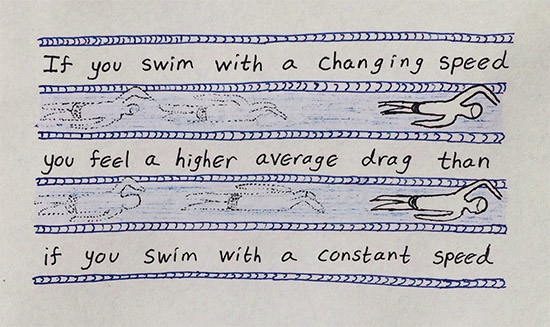 2016 Olympics Special: Swimming and Drag
2016 Olympics Special: Swimming and Drag
While swimming, a swimmer experiences drag from the water. The drag force is roughly proportional to the swimmer's speed squared. For any quantity, the average of its squared value is always greater than the square of its average value (unless it is constant). Thus, the average drag experienced by a swimmer with changing speed is higher than the average drag experienced by a swimmer with constant speed (provided that both swimmers have equal average speed). This means that a swimmer that keeps a constant pace will exert less total work on the water, making it easier to maintain that speed.
For more about this fact about averages and squares, see Jensen's Inequality.
For more about swimming, see the book "The Science of Swimming" by James Counsilman.

